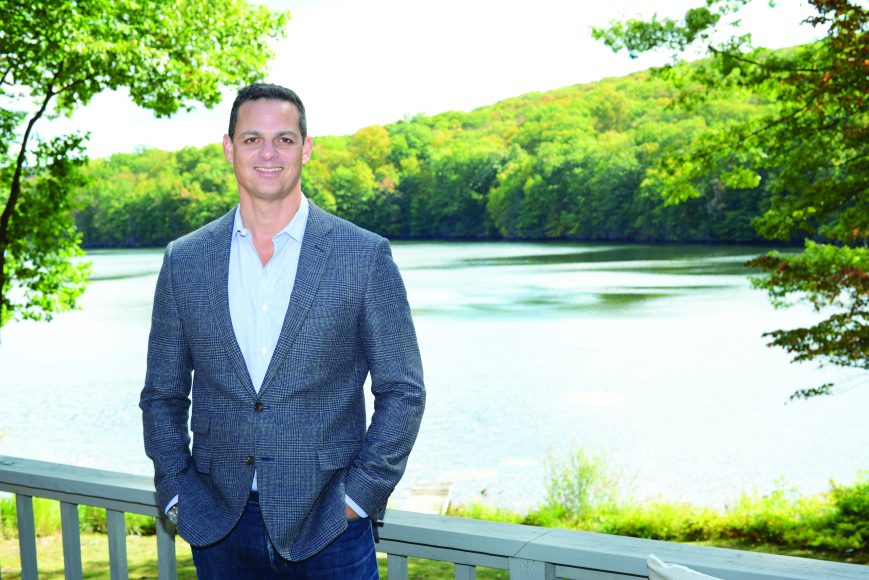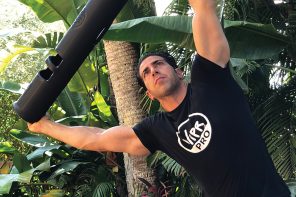Lawyers are not exactly known for witty, playful writing. So while scouring the website of Klaris Law, a boutique media and intellectual property firm, we were understandably impressed with this statement regarding the Klaris Law difference:
“We treat people with kid gloves, until the gloves have to come off.” It’s pithy, it’s catchy and it absolutely expresses the view of Edward Klaris, who founded the firm in 2014.
“It reflects the approach I take with people: Be gentle and kind until it’s time to be tough,” he says.
But it also reflects a lawyer who believes, blessedly, that legal documents should be written in plain, even elegant English. That is probably because he has spent his career surrounded by journalists and artists in every medium.
“I’ve never been a creative person. But I facilitate the work of creative people,” says the Waccabuc resident, who’s been interested in entertainment law since his father, producer Harvey Klaris, secured the rights to Federico Fellini’s film “8 ½” for the 1982 Broadway musical “Nine.”
What Edward Klaris is most passionate about is working with the big portfolios of multinational companies that hire creative people, ensuring that their brands have their trademark, copyright and logo ducks all in a row and are getting the right kind and amount of exposure. As senior vice president, Intellectual Property Assets & Rights at Condé Nast for more than eight years prior to founding Klaris Law, he turned magazines, photographs and stories into digital archives, movies, TV shows, franchises and product lines, creating millions in net profit. “Art and commerce need to go together,” he says.
The other big part of Klaris’ career has been spent “kicking the tires,” as he says, of what the media report to make sure it can stand up to legal scrutiny. Perhaps there was never more dramatic tire kicking than during his tenure as general counsel to The New Yorker (2000-06), when Pulitzer Prize-winning investigative reporter Seymour Hersh broke the story of the CIA abuse of Iraqi prisoners at Abu Ghraib.
“That dealt with national security information,” he says. “So do you print or do you check with the government. How do you handle that?”
As with the explosive Abu Ghraib story, much of Klaris’ work with the media has involved a subject that is much discussed and often misunderstood — the First Amendment of the United States Constitution, which states that “Congress shall make no law respecting an establishment of religion, or prohibiting the free exercise thereof; or abridging the freedom of speech or of the press; or the right of the people peaceably to assemble and to petition the government for a redress of grievances.”
While First Amendment rights have their limits — child pornography, the classic example of yelling “fire” in a crowded movie theater where there is no fire — “as a rule, the First Amendment is weightier than the right to privacy,” says Klaris, who has taught a seminar on media law, commercial speech, privacy and intellectual property at Columbia Law School since 2005. “The First Amendment is the First Amendment. It’s in the Constitution. The United States places a higher value on freedom of speech than on the right to privacy, which is not in the Constitution.”
He points to the landmark 1964 U.S. Supreme Court case, The New York Times Co. v. Sullivan, in which the court ruled that freedom of speech restricts the rights of American public officials to sue for defamation.
“The Supreme Court said that even if a person’s reputation is tarnished, The Times tried to do the right thing, that you should be able to make mistakes.”
This established the so-called “actual malice” standard for defamation of public officials, in which the plaintiff must prove not only that what the defendant said or wrote was wrong but that he presented the false information deliberately.
Contrary to what you might think, a conservative court, such as the present one, comes down on the side of free speech more than a liberal one, Klaris says. Conservative justices tend to be strict Constitutionalists “who abide by the original intent.” Whereas liberal justices often weigh free speech against issues of hate speech and privacy.
You imagine Klaris having such conversations with wife Robin Pogrebin, a reporter on The Times’ Culture Desk and co-author (with colleague Kate Kelly) of “The Education of Brett Kavanaugh,” which has been lauded and criticized for its account of the newest Supreme Court justice’s alleged sexual misconduct.
Klaris describes his marriage as a “symbiotic” relationship, in which they explore issues of the law and journalism informally while respecting professional boundaries. When they need a break from their high-powered careers, they head out of the Big Apple to their home overlooking Whatmore’s Lake, where he likes to row.
“The lake is the draw,” Klaris says of the property they bought a year ago, not far from the home of their friends Josh Lehrer and Jeffrey Seller.
“We looked out from the deck and were smitten by its shimmering beauty. We love it.”
No doubt, the lake offers him a “peaceful map,” which is precisely how he describes a well-written contract.
For more, visit klarislaw.com.





